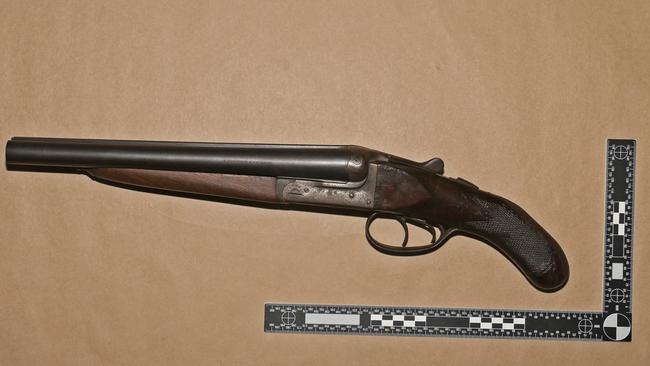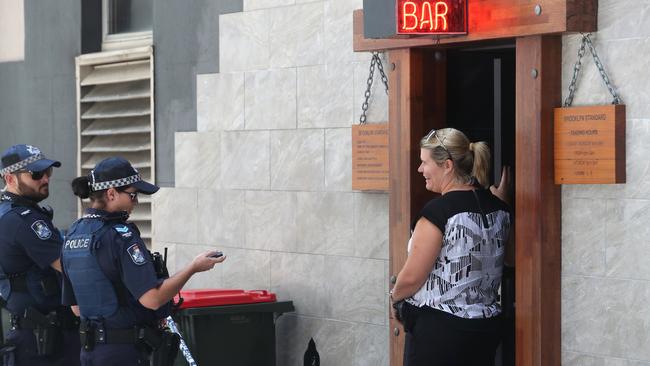‘Reckless’ armourer in Bliss n Eso fatal shooting would be charged with manslaughter if still alive: Coroner
A coroner has delivered a bombshell finding into the fatal shooting of stuntman Johann Ofner on the set of a Bliss n Eso music video.
Police & Courts
Don't miss out on the headlines from Police & Courts. Followed categories will be added to My News.
A “reckless” armourer who supplied the sawn-off shotgun that killed a stuntman on the set of a Bliss n Eso music video would have been charged with manslaughter if he was still alive, a coroner has found.
Gold Coast father and stuntman Johann Ofner was killed in January 2017 when he was shot in the chest with a double barrel shotgun while filming a music video at the Brooklyn Standard bar in Brisbane.
Coroner Donald MacKenzie handed down his findings from an inquest into Mr Ofner’s death on Tuesday, saying the training and safety for the film production was inadequate.
“I have made recommendations to the Queensland Government regarding legislative reform and improved training and supervision of theatrical armourers.
“However the critical lesson from this tragedy is that Mr Ofner died because of criminal actions,” he said referring to the actions of the armourer.
“His death was avoidable.”

The coroner said a safety officer had not been appointed on the set, firearms safety briefings were not undertaken, there was a failure to test fire the weapon to establish safe distances for the actors, and safer production options such as computer enhancement or using inoperable firearms had not been considered.
The film’s armourer Warren Ritchie, who died in August 2017 from a terminal illness, had provided eight guns for the production.
Four were chosen for the scene in which Mr Ofner died, including a shortened 12-gauge double barrel shotgun, two nine-millimetre blank-fire pistols and an M11 model replica sub-machine gun.
“Pursuant to (the Queensland weapons regulations) all weapons supplied under Mr Ritchie’s ordnance supply licence must have been blank fire or permanently inoperable,” Coroner MacKenzie said.
“Clearly the shortened shotgun that was fired killing the deceased was neither.
“The use of a plastic wad and a fibre filler in the shotgun cartridge shell created a projectile, so this sawn off shotgun could not be considered inoperable.”
The coroner said at the time of the filming, Mr Ritchie was suffering from a terminal illness and was taking prescribed opioid medication.
“There is an inference to be drawn that he was unwell at the time of his death, which affected his judgment,” he said.

Nevertheless, had Mr Richie survived, he would have faced the prospect of a manslaughter charge, an unlawful possession of a handgun (charge), the unlawful supply of a handgun (charge), and a breach of work health and safety duty causing death charge under now repealed legislation.”
The coroner said in October 2017 an industrial manslaughter charge also became available to prosecutors “of which theatrical armourers must now be cognisant today”.
“These charges stem from the illegality of Mr Ritchie bringing an operable firearm on to a theatrical performance site,” Coroner MacKenzie said.
He said if convicted of the offences, Mr Ritchie would have received lengthy prison sentences, with a manslaughter conviction in similar circumstances attracting a head sentence of 10 years imprisonment.
“Given these grave consequences for any theatrical armourers in Queensland should he or she repeat Mr Ritchie’s recklessness, it is hoped this tragic death and its attendant publicity will act as a paragon of deterrence,” he said.

The coroner made three recommendations to the government in the hopes of preventing similar deaths in the future.
He recommended the weapons legislation be reviewed in relation to the definition of blank fire munitions and make it clear that operable firearms and non-blank firing weapons cannot be used in theatrical performances.
He also called for the establishment of a section of the Queensland Police Service whose specific role is to review the role of theatrical armourers and define their rights and obligations and introduce standards for training and testing.
He said one positive outcome of the tragedy was that production stakeholders had since come together to create national guidelines for screen safety which are yet to be ratified.
Coroner MacKenzie recommended the Office of Industrial Relations consider creating a Code of Practice for armourers and the use of firearms in the film industry.
He also recommended there be consistent Australia-wide legislative code for theatrical armourers outlawing the use of operable firearms and non-blank firing weapons in theatrical performance.




